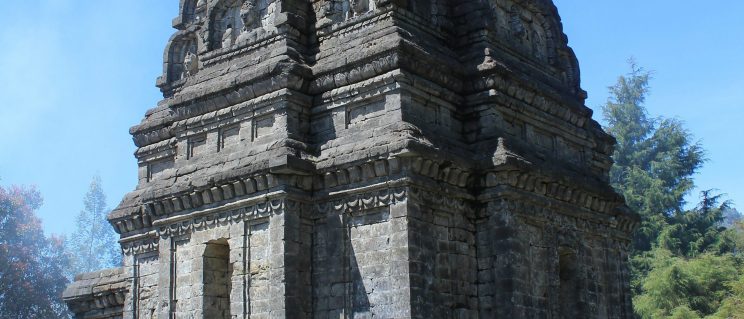Indonesia, Central Java, 7th–9th century, Andesite
Remarkably little is known about the impressive set of temples on the Dieng Plateau. Perched in the highlands of northern Java, was this the Hindu (Shaiva) answer to the Buddhist kingdom below? Inscriptions found in the area span the ninth through thirteenth century, but scholars disagree on dates for Dieng’s temples. While some scholars have contended that the temples were built in the seventh century—earlier than the Buddhist monuments of the central plains—other historical narratives lead to a ninth-century date.

Dieng’s temples are puzzling in part because of their diverse architectural styles. While the five shrines known collectively as Candi Arjuna resemble the tiered, pyramidal structures of southern Indian temples, Candi Bima’s superstructure rises with a curvilinear contour that recalls temples built in northern and eastern India.

Candi Bima’s relief carvings and architectural ornament also seem to have been informed by Indian prototypes. Java’s artisans selectively adapted the forms and styles available to them. In doing so, they created their own visual languages.



